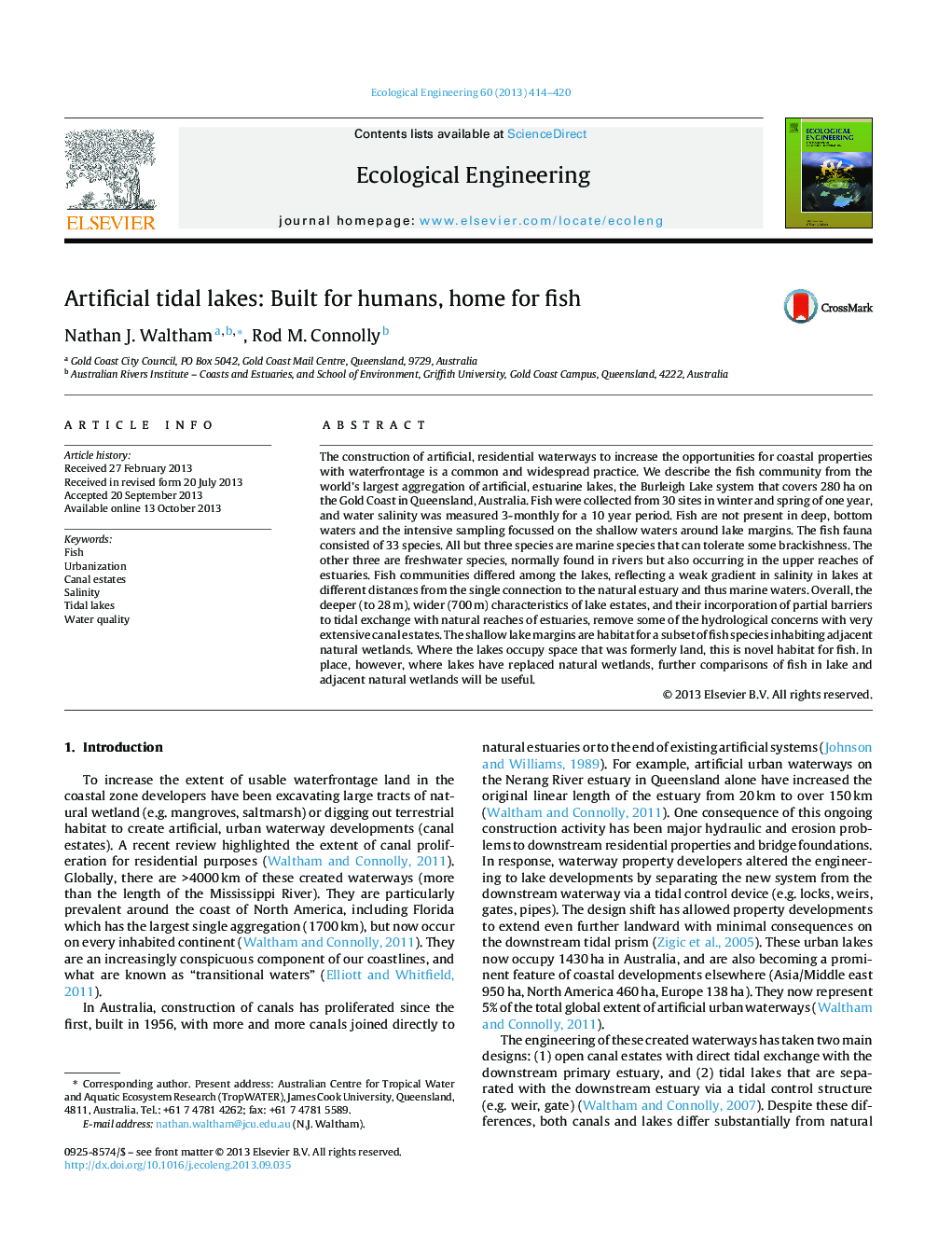| کد مقاله | کد نشریه | سال انتشار | مقاله انگلیسی | نسخه تمام متن |
|---|---|---|---|---|
| 6302449 | 1618038 | 2013 | 7 صفحه PDF | دانلود رایگان |
- We surveyed the fish fauna in the world's largest artificial tidal lake system (280Â ha).
- The fauna consisted of 33 fish species, mostly marine species also found in adjacent natural wetlands.
- Fish distributions at lake margins relate to salinity, not temperature, or dissolved oxygen.
- Information can be used to better plan proposed urban waterway developments.
The construction of artificial, residential waterways to increase the opportunities for coastal properties with waterfrontage is a common and widespread practice. We describe the fish community from the world's largest aggregation of artificial, estuarine lakes, the Burleigh Lake system that covers 280Â ha on the Gold Coast in Queensland, Australia. Fish were collected from 30 sites in winter and spring of one year, and water salinity was measured 3-monthly for a 10 year period. Fish are not present in deep, bottom waters and the intensive sampling focussed on the shallow waters around lake margins. The fish fauna consisted of 33 species. All but three species are marine species that can tolerate some brackishness. The other three are freshwater species, normally found in rivers but also occurring in the upper reaches of estuaries. Fish communities differed among the lakes, reflecting a weak gradient in salinity in lakes at different distances from the single connection to the natural estuary and thus marine waters. Overall, the deeper (to 28Â m), wider (700Â m) characteristics of lake estates, and their incorporation of partial barriers to tidal exchange with natural reaches of estuaries, remove some of the hydrological concerns with very extensive canal estates. The shallow lake margins are habitat for a subset of fish species inhabiting adjacent natural wetlands. Where the lakes occupy space that was formerly land, this is novel habitat for fish. In place, however, where lakes have replaced natural wetlands, further comparisons of fish in lake and adjacent natural wetlands will be useful.
Journal: Ecological Engineering - Volume 60, November 2013, Pages 414-420
